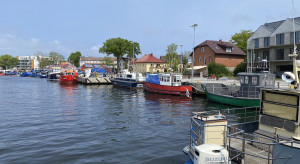The growing wolf population in Poland exposes farmers to increasing losses. However, the Ministry of Climate and Environment does not have good news regarding the change in the wolf’s protective status.
Due to the constantly increasing population of wolves and, consequently, the fact that they generate a lot of damage, the National Council of Agricultural Chambers has once again appealed to the Ministry of Climate and Environment to intervene and change the protective status of the wolf in Poland. However, according to MKiŚ, this change is not possible.
Reducing wolf protection is possible…
The wolf is listed in Annex II of the Convention of 19 September 1979 on the conservation of species of wild European flora and fauna and their habitats (the so-called Bern Convention) as a strictly protected animal species. During the ratification of the Berne Convention, Poland submitted, pursuant to Art. 22 of this Convention, a reservation regarding the species in question, according to which it may be covered by a protection status in Poland other than that provided for in the convention. Therefore, in the light of the Convention, the wolf may be covered by partial species protection in Poland – reminds the ministry.
… but the ministry won’t do it
He adds, however, that despite the possible limitation of species protection, Poland, based on national regulations, applies strict protection to this species and issues individual derogations from bans that are consistent with the provisions of the Bern Convention.
As emphasized by the Ministry of Environmental Protection, the permit system, combined with the possibility of obtaining compensation for damage caused by wolves and subsidies for preventive measures, allows for flexible management of the wolf population in Poland.
Poland, having a well-functioning management and protection system, is not interested in changing the protective status of the wolf in the Bern Convention and will abstain from voting during the debate in the Council on this topic. I would like to kindly inform you that the countries have already presented their positions on this subject during the WPIEI-Biopersity meeting, which took place on April 4, 2024 – informed Mikołaj Dorożała, Deputy Minister of Climate and Environment, in a letter addressed to KRiR.
Let us remind you: the wolf has been under strict protection throughout the country since 1998 (currently pursuant to the Regulation of the Minister of the Environment of December 16, 2016 on the protection of animal species). The wolf population has been systematically increasing since the species was placed under strict protection, and its range has also expanded. In the report submitted to the European Commission in 2019, which was prepared in accordance with Art. 17 of the Habitats Directive, the conservation status of the wolf in the Alpine biogeographical region was considered fair (FV), while in the continental region it was considered unfavorable but improving (U1+). It should be remembered that the protection of the wolf both at the level of the entire country, and the consequence of protection at the level of the European Union – in Poland since 2004, was aimed at, among others, for this purpose, i.e. to increase the number and range of the species.
The Ministry of Climate and Environment indicates the current mechanisms for mitigating human-wolf conflicts. Belong to them:
- the possibility of issuing individual permits to derogate from the ban on disturbing or intentionally killing problematic individuals. Such permits have been and are being issued, e.g. 12 permits were issued in 2022, and 20 in 2021. It should be noted that permits are issued at the request of the interested party. It is worth emphasizing that many reports considered during the explanatory proceedings are not supported by facts, which means that the collected evidence does not provide convincing arguments in favor of culling the wolf. Often, the applicants themselves deviate from the original request and do not correct the formal deficiencies in the applications they sent, which, in accordance with the regulations, makes it necessary to leave such cases unexamined,
- payment of compensation for damage caused by these animals in accordance with the principles set out in the Nature Protection Act,
- the possibility of cooperation of the injured parties with the regional directors of environmental protection or directors of national parks in the field of securing property – e.g. consisting in the construction of devices or carrying out measures to prevent damage financed from the budget of the locally competent director of the national park or regional director of environmental protection, under concluded civil law contracts.
– .


